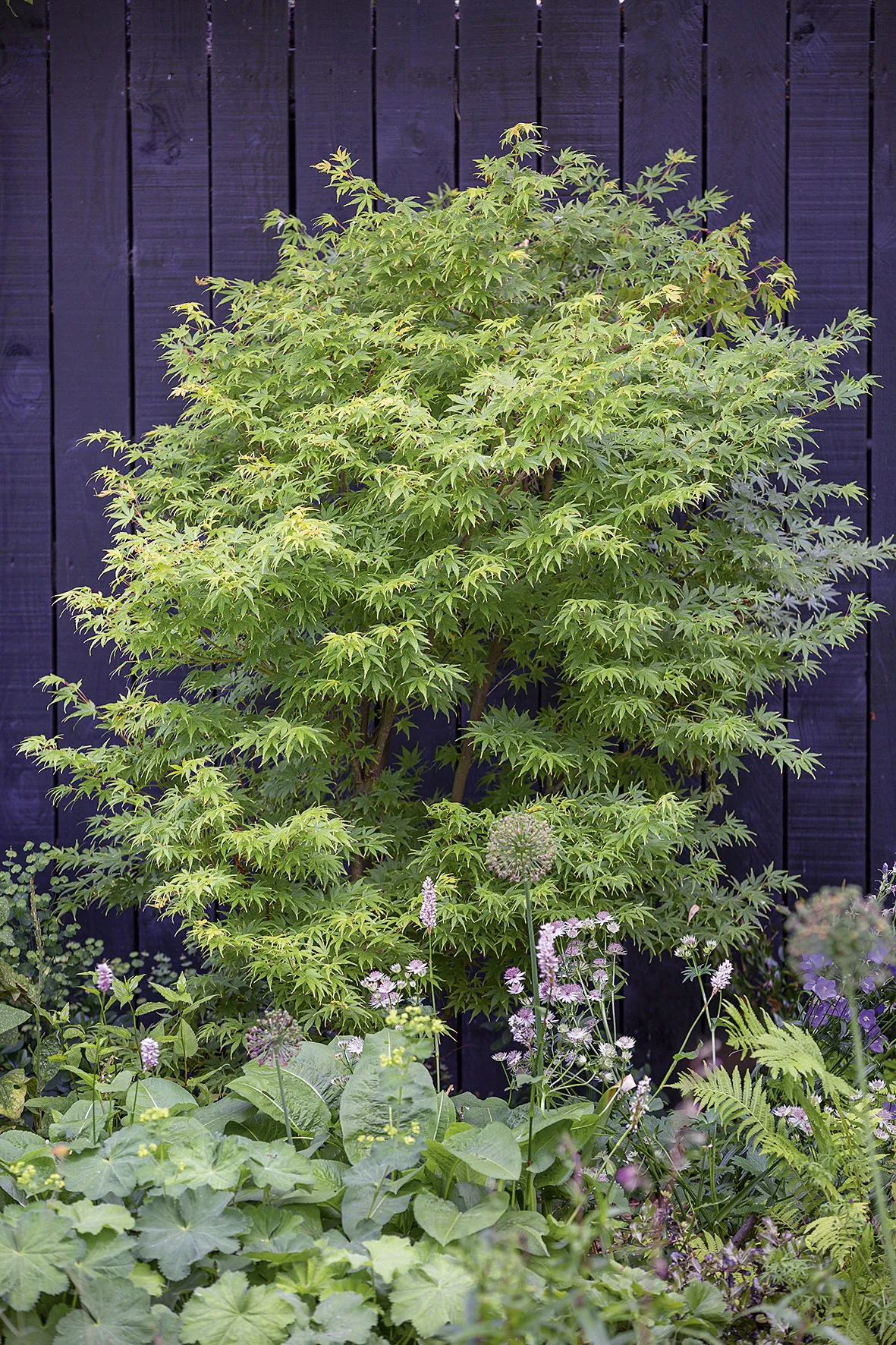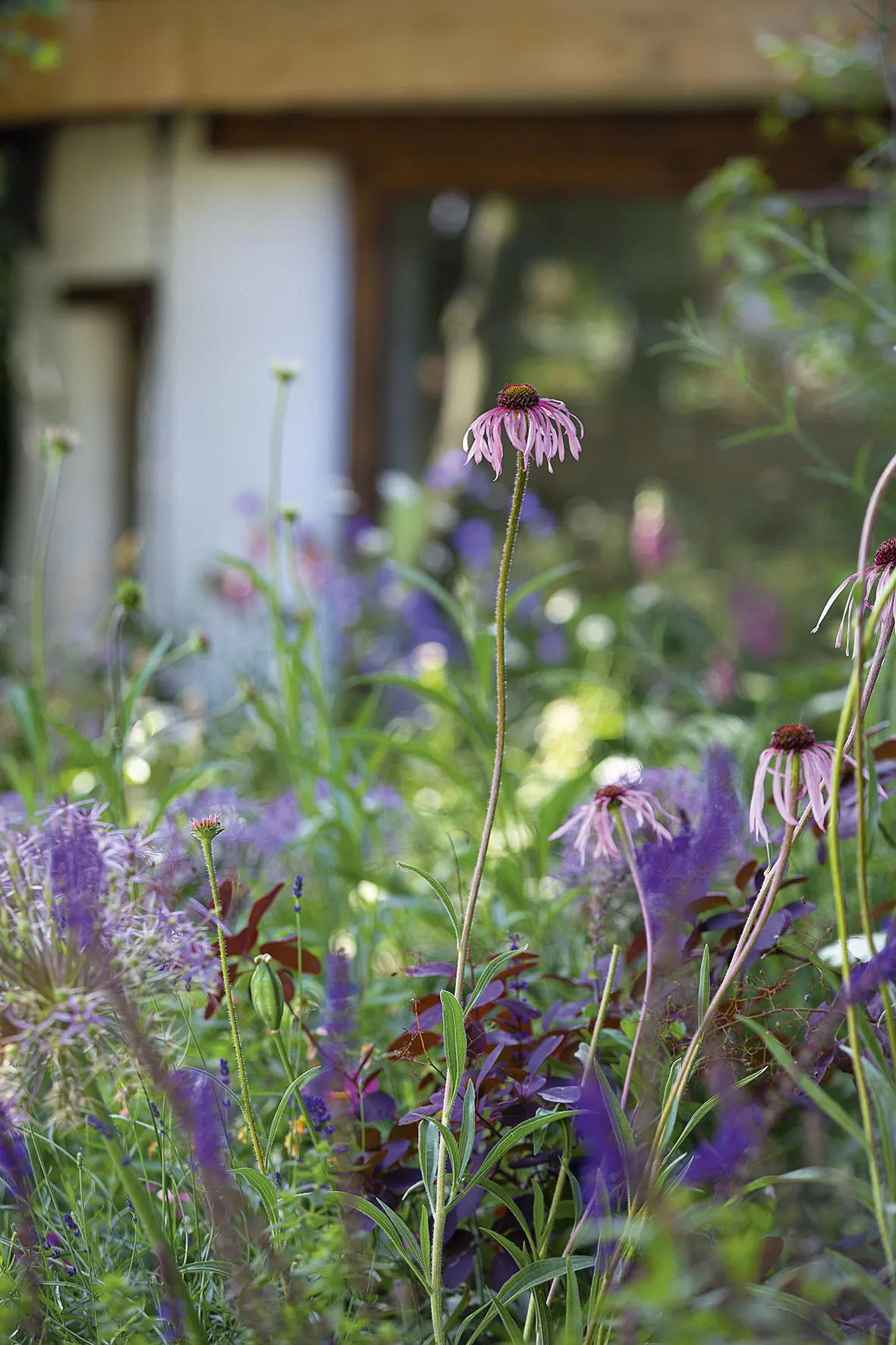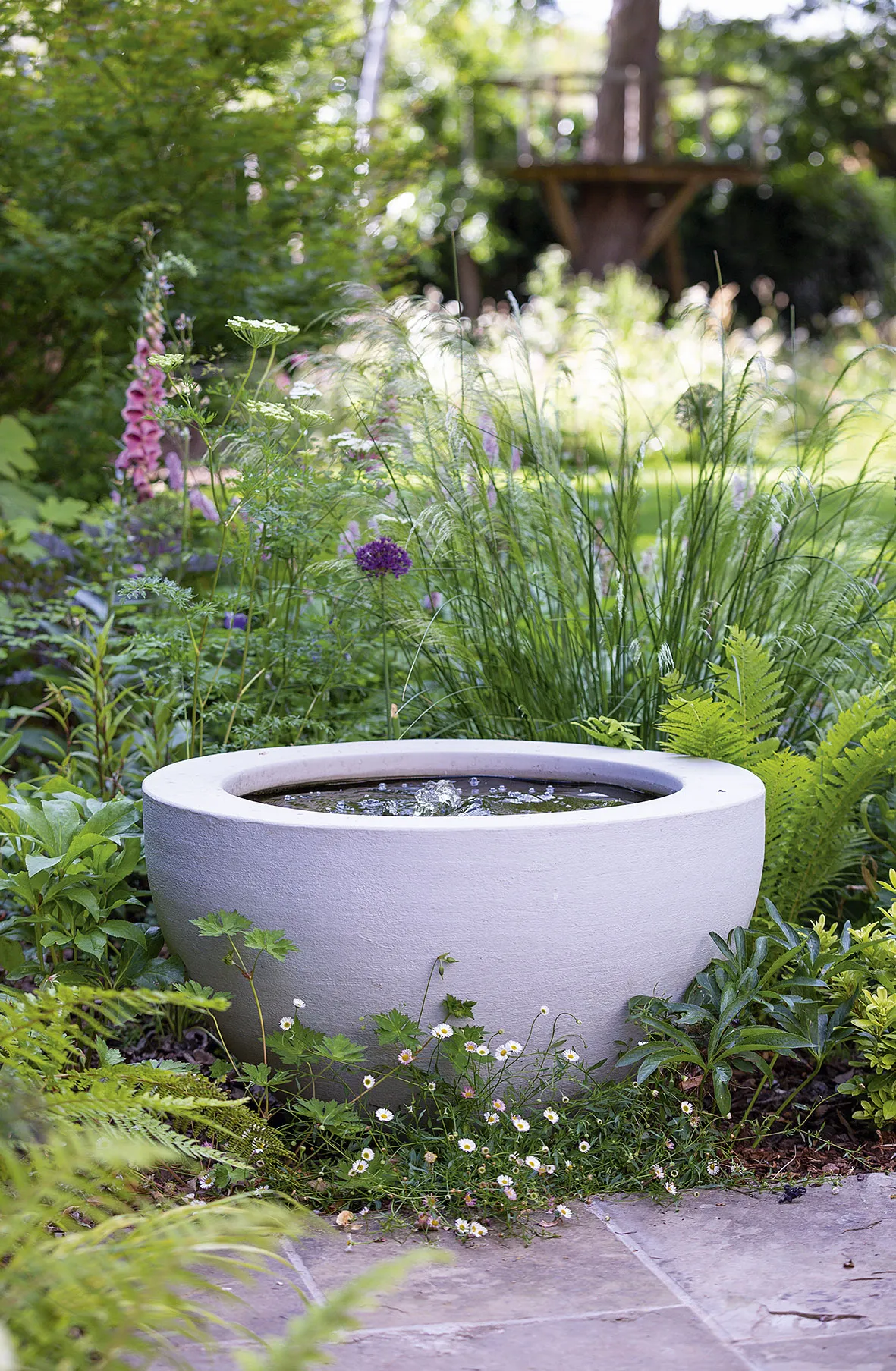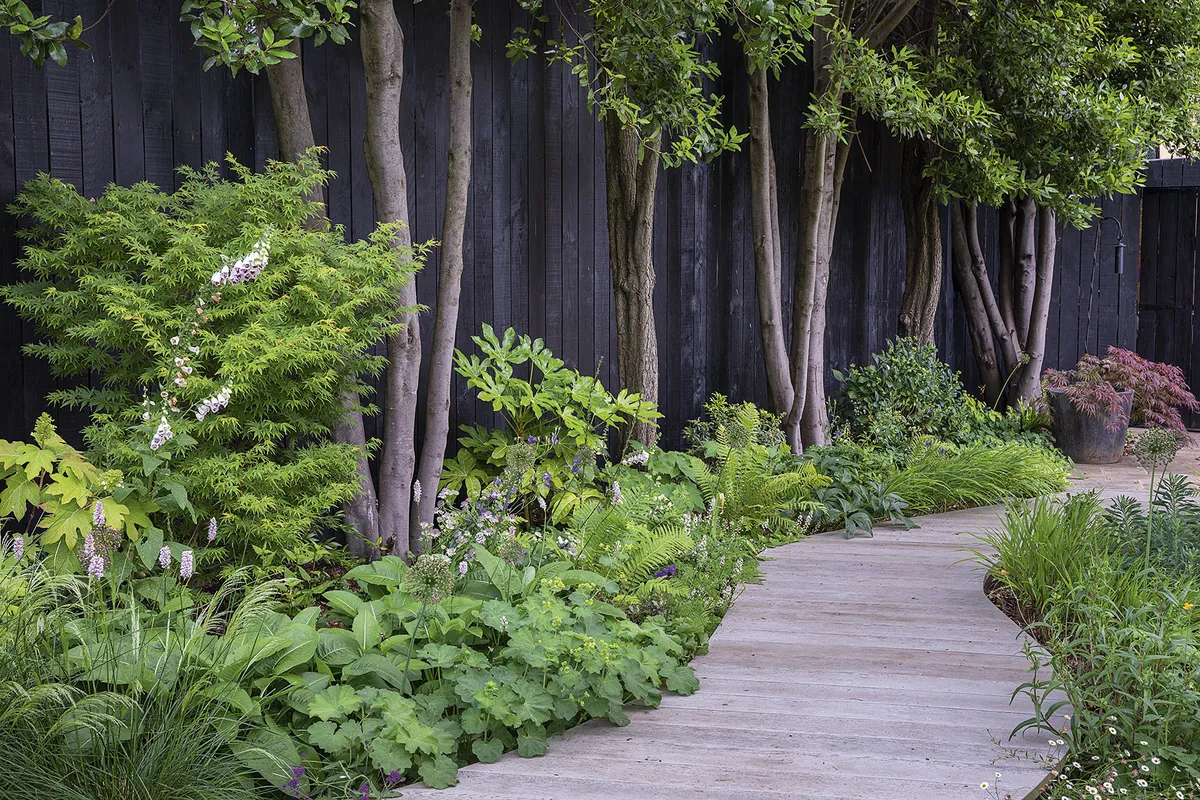In small city gardens, it can be hard to tap into any sense of genius loci. But this plot nestles up against the wildflower-strewn banks of a north London reservoir and wetland. Along with a charming cob summer house, built by the previous owners, these banks form the vista of the garden. This unique character convinced the current owners, Emma and David Barker, to move here – and persuaded garden designer Jenny Bloom to take on the project. For all its charm, the garden had become crowded with a tangle of tall trees that shaded the whole space, while the boundary on one side was a mess of breeze block, brick and wire that only served to lead the eye towards the seven-storey block of flats beyond.
You may also like
- Modern small garden ideas
- New planting ideas for small garden ideas
- How to use colour and layers in small gardens
KEY ELEMENTS
What Residential garden. Where North London. Size An elongated quadrilateral covering about 410 square metres. Soil Topsoil over London clay, with added organic matter and grit where needed to ease drainage. Aspect Northwest-facing. Special features Cob house, meadow area. Designed by Jenny Bloom (jennybloom.co.uk).
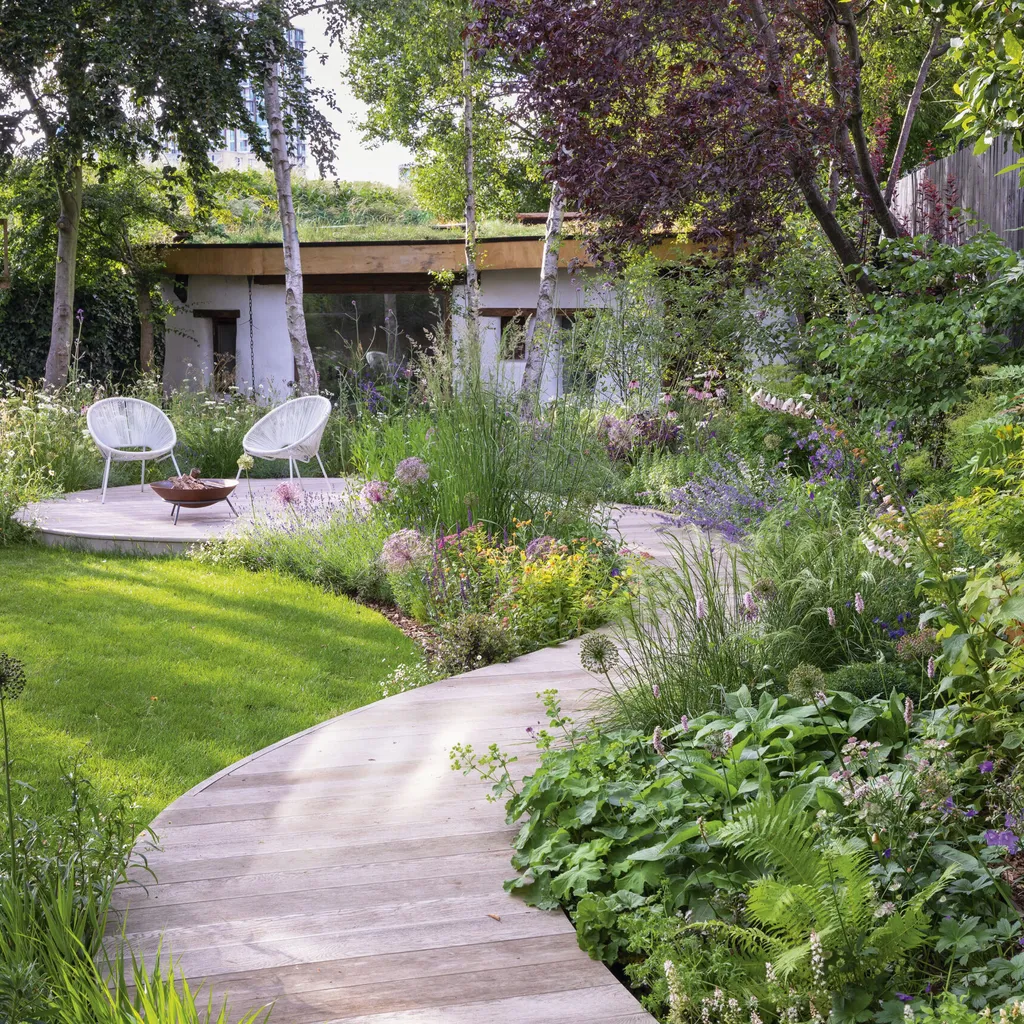
Jenny also had to reconcile the family’s seemingly contradictory wishes for their garden. While the two young children wanted somewhere to play, including a lawn for ball games, David wanted the space to feel neat, orderly and restful while Emma wanted to retain the garden’s wild ambience. “The questions Jenny asked were so helpful in drawing out what we wanted and enabling us all to see the possibilities,” recalls Emma.
Taking the neighbouring wilderness as her inspiration, Jenny decided on a curvilinear plan to play down the garden’s elongated quadrilateral shape and to open up the centre of the space with a lawn. The existing mature trees – including birch, ash, hawthorn, cherry, pear and bay – were sensitively pruned to bring more light into the garden while continuing to provide screening. A tall timber fence, stained black, was installed to screen the ugly boundary and act as a backdrop for planting.
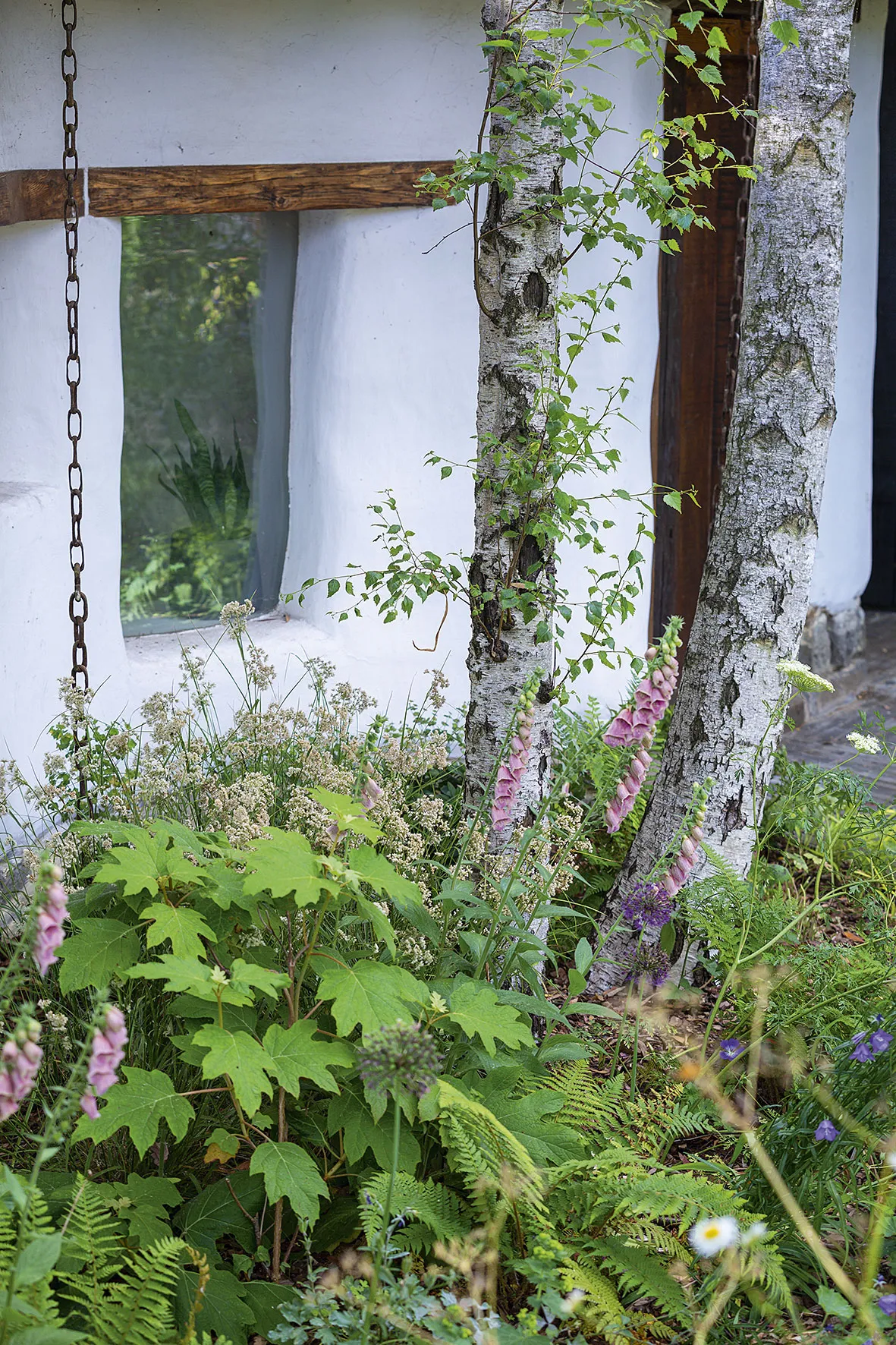
Jenny created a serpentine boardwalk that meanders through a haze of planting, culminating in a seating area. Slightly elevated and edged with a fascia, it takes on a sculptural quality, allowing the visitor to feel as though they are floating through the planting. “This key feature adds definition to the space and helps bring everything together,” explains Jenny.
Jenny brought the wetland into the garden by using plants inspired by those growing on the bank beyond. “In London, you can’t often borrow a landscape of wildflowers and grasses, so I wanted to incorporate this into the garden by creating a perennial wildflower meadow at the end of the lawn, blurring the boundary between the garden and the wild landscape beyond,” she explains.

She was also keen to use the ‘cultivated cousins’ of the neighbouring wildflowers in this project. Plants such as Deschampsia cespitosa ‘Goldtau’ and Cenolophium denudatum are woven through the rest of the soft, romantic planting scheme, which also features strawberry foxglove (Digitalis x mertonensis), Campanula persicifolia and Allium cristophii, that repeat throughout the garden.“They add rhythm and unity,” says Jenny. Opting for a colour palette of white, pale pink, purple and blue, with some hotter accent colours, Jenny selected many plants for their long flowering periods, including Persicaria bistorta ‘Superba’ and white gaura (Oenothera lindheimeri). “Every plant has to earn its place in a small garden.”
The family is delighted with the end result. “It feels spacious, restful and wild at the same time,” says Emma. “We are surrounded by green and by nature. It’s a hidden space in the middle of the city."
